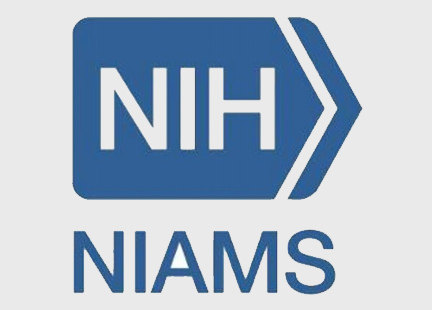
Spotlight on Research 2012
January 2012 (historical)
Mechanism, Potential Therapy for Scleroderma Lung Disease Uncovered
Investigators, partially supported by the National Institute of Arthritis and Musculoskeletal and Skin Diseases, have found that a deficiency in the protein caveolin-1 (cav-1) is linked to the development of interstitial lung disease, the scarring of lung tissue that causes disability and death in people with scleroderma. The scientists, from the Medical University of South Carolina (MUSC) in Charleston, also showed that a special peptide called caveolin scaffolding domain (CSD) inhibits progression of the disease in mice. The study was reported in Fibrogenesis & Tissue Repair.
Scleroderma is an autoimmune disorder in which the immune system mistakenly attacks the body’s own tissue. The systemic form of the disease, known as systemic sclerosis, is characterized by hardening and scarring that can seriously affect both skin and internal organs. Scarring, also known as fibrosis, is caused by overproduction of the protein collagen, not only by fibroblasts—a common cell found in connective tissue—but also by fibrocytes, cells that come from monocytes and originate in the blood. Fibrocytes express a protein called CXCR4, which helps fibrocytes migrate from the blood to lung tissue, where they contribute to lung fibrosis.
In their study, Elena Tourkina, Ph.D., and her MUSC colleagues examined seven systemic sclerosis patients with interstitial lung disease. These patients all had fibrocytes in their lungs, along with overexpressed CXCR4. Lungs from healthy controls, however, showed no fibrocytes or overexpressed CXCR4.
From previous work, Dr. Tourkina’s group also knew that levels of cav-1 protein were significantly reduced in the fibrotic lung tissue of people with systemic sclerosis, and in a mouse model of fibrotic lung disease. Her team treated monocytes from lung-involved systemic sclerosis patients with the CSD peptide. Their results showed reduced CXCR4 expression, and—using a laboratory procedure that mimics the movement of monocytes into damaged lung tissue—reduced monocyte migration. The researchers also administered CSD peptide to mice treated with bleomycin, which creates a model of systemic sclerosis in which the animals develop lung fibrosis. This treatment, they found, slowed monocyte and fibrocyte migration to the lungs and also slowed disease progression in the mice.
"Our results highlight the ability of CSD peptide to reduce fibrocyte migration to the lungs, thereby reducing lung fibrosis," says Dr. Tourkina. "CSD peptide may, in fact, be valuable as a therapy for interstitial lung disease in systemic sclerosis patients."
An estimated 49,000 adults in the U.S. have scleroderma, and lung involvement is emerging as the leading cause of morbidity and mortality. Treatments for fibrotic lung disease have been only moderately successful, and lung transplantation is often needed.
Partial support for this study was also provided by the NIH’s National Heart, Lung, and Blood Institute, National Center for Complementary and Alternative Medicine, and National Center for Research Resources. Other supporters include the South Carolina Clinical and Translational Research Institute, the Scleroderma Foundation, and the Leducq Foundation.
The mission of the National Institute of Arthritis and Musculoskeletal and Skin Diseases (NIAMS), a part of the U.S. Department of Health and Human Services’ National Institutes of Health (NIH), is to support research into the causes, treatment, and prevention of arthritis and musculoskeletal and skin diseases; the training of basic and clinical scientists to carry out this research; and the dissemination of information on research progress in these diseases. For more information about the NIAMS, call the information clearinghouse at (301) 495-4484 or (877) 22-NIAMS (free call) or visit the NIAMS website at https://www.niams.nih.gov.
###
Tourkina E, et al. Altered monocyte and fibrocyte phenotype and function in scleroderma interstitial lung disease: reversal by caveolin-1 scaffolding domain peptide. Fibrogenesis & Tissue Repair. 2011 July 1; 4(1):15. Epub ahead of print. PMID: 21722364.
